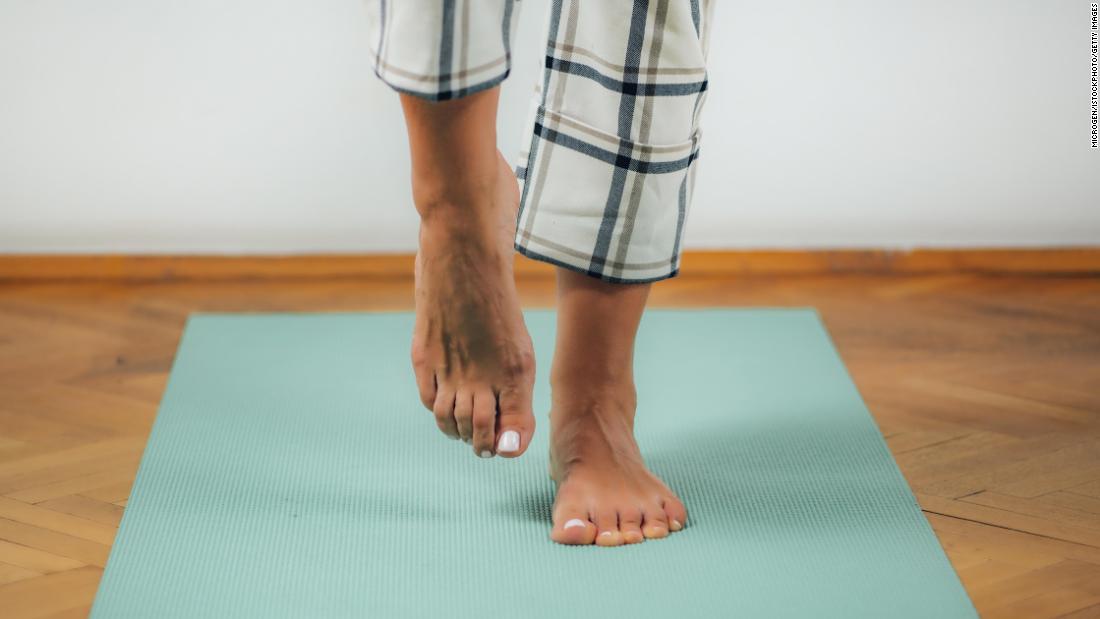
The study involved 1,702 people ages 51 to 75 living in Brazil, who were asked to balance unsupported on one leg during an initial check. Researchers told the participants to place the front of the free foot behind the standing leg, keep their arms by their sides and eyes fixed straight ahead. Up to three attempts on either foot were permitted.
Being able to balance on one leg is important for older people for a number of reasons, and it is also reflective of wider fitness and health levels, said study author Dr. Claudio Gil Araújo at Exercise Medicine Clinic – CLINIMEX – Rio de Janeiro, Brazil.
“We regularly need … a one-legged posture, to move out of a car, to climb or to descend a step or stair and so on. To not have this ability or being afraid in doing so, it is likely related to loss of autonomy and, in consequence, less exercise and the snowball starts,” he explained.
Poor balance and longevity
The study participants had an average age of 61 and two-thirds of them were men. Around 1 in 5 failed to balance on one leg for 10 seconds at the initial checkup.
Researchers monitored the participants after the initial checkup for a period of seven years, during which 123 — 7% — of the people being studied died. The proportion of deaths among those who failed the test (17.5 %) was significantly higher than deaths among those who were able to balance for 10 seconds (4.5%).
The study found that for those unable to complete the balance test there was an 84% higher risk of death from any cause, and this link remained even when other factors — including age, sex, BMI, and preexisting conditions or health risks such as coronary artery disease, hypertension, obesity, high cholesterol and diabetes — were taken into account.
However, the researchers were not able to include in their analysis other variables such as recent history of falls, pattern of physical activity, exercise or sports practice, diet, smoking, and the use of medications that may interfere with balance.
The research was observational and doesn’t reveal cause and effect. The study didn’t look at any possible biological mechanisms that might explain the link between poor balance and longevity.
Dr. Naveed Sattar, a professor of metabolic medicine in the Institute of Cardiovascular & Medical Sciences at the University of Glasgow, said the research was interesting but not definitive.
“As one leg standing requires good balance, linked to brain function, good muscle strength and good blood flow, it likely integrates muscular, vascular and brain systems so it is a global test of future mortality risk — albeit crude,” said Sattar, who wasn’t involved in the study.
“If someone cannot do the 10 seconds and is worried, they should reflect on their own health risks,” he said.
“They could try to make positive lifestyle changes such as walking more, eating less if they realize they could do better — most underestimate importance of lifestyle to health,” he said. “But also they could consult with their doctor if, for example, they have not had risk factors for cardiovascular disease measured or other chronic conditions such as diabetes tested for.”
Improving balance
In general, those who failed the test had poorer health and included a higher proportion of people who were obese and/or had heart disease, high blood pressure, and unhealthy blood fat profiles, according to the study. Type 2 diabetes was also more common among those who failed to complete the test.
The study took place between 2009 and 2020 and was part of wider research project that started in 1994.
The inability to complete the balance test rose with age, more or less doubling at subsequent 5-year intervals from the age range of 51 to 55 and onward. More than half (around 54%) of study participants ages 71 to 75 were unable to complete the test, compared with 5% in the lowest age bracket who couldn’t do it.
There were no clear trends in the deaths, or differences in the causes of death, between those able to complete the test and those who weren’t able to do so.
Araújo said that balance could be substantially improved by specific training, and this was something he worked on with patients involved in a medically supervised exercise program. However, he said that he didn’t yet have the data to assess whether improving balance influenced longevity.
If you want to test your own ability to balance on one leg for 10 seconds, Araújo advised that it is best to stand close to a wall or table or another person for support.

